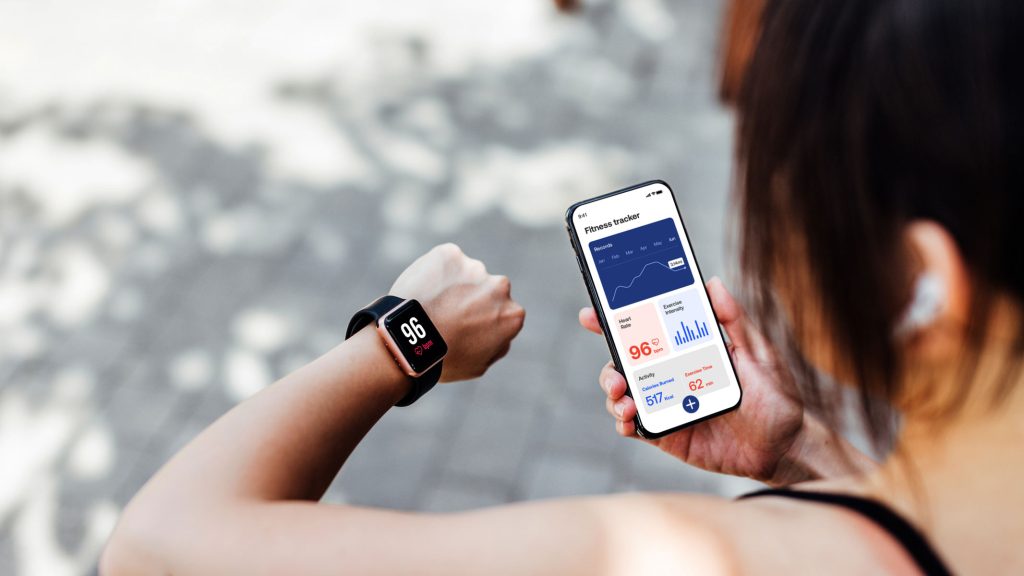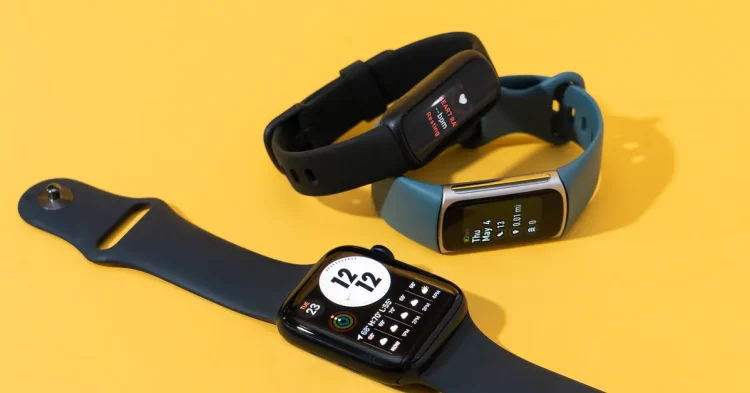Introduction
In an era where health and wellness are more than just buzzwords, people are increasingly turning to technology to take control of their personal health. Wearables such as fitness trackers, smartwatches, and body fat scales are rapidly gaining popularity due to their ability to monitor various aspects of health in real time. These devices not only help individuals keep track of physical activities but also offer insights into overall well-being, encouraging healthier lifestyles.
The rise of these devices has fundamentally transformed how people approach health management. Instead of waiting for an annual check-up or a visit to the gym, individuals can now monitor their fitness levels, sleep patterns, heart rate, and other vital statistics daily, using technology that fits right on their wrist or is seamlessly integrated into their home environment. As these devices become more sophisticated, they provide insights that were once only accessible through medical professionals or in specialized health clinics.
In this article, we will delve into the ways in which fitness trackers, smartwatches, and body fat scales are revolutionizing personal health management, and explore how they help users improve their fitness levels, track their progress, and maintain a healthy lifestyle.
1. The Evolution of Wearable Health Devices
1.1 Fitness Trackers: From Simple Step Counters to Comprehensive Health Monitors
Fitness trackers, which started as simple devices to track steps, have evolved into all-encompassing health monitors. The first generation of fitness trackers, such as the Fitbit or Jawbone, primarily counted steps and estimated calories burned. Today, they offer far more advanced features, including monitoring of heart rate, sleep quality, calorie intake, GPS tracking, and even stress levels.
- Heart Rate Monitoring: Modern fitness trackers use optical sensors to detect heart rate fluctuations, providing valuable information on how hard your body is working during exercise or rest.
- Sleep Tracking: Devices like Fitbit and Garmin have made sleep tracking a core feature. These trackers can monitor your sleep cycles, including deep sleep, REM sleep, and light sleep, offering insights into how well-rested you are and suggesting improvements for a more restful night.
- Advanced Metrics: Some high-end fitness trackers now offer advanced metrics like VO2 max, which measures your body’s ability to consume oxygen during intense exercise, or skin temperature sensors, which can indicate changes in your body’s internal state.
The integration of health data tracking with mobile apps has further improved the experience. Many fitness tracker apps allow users to create personalized health goals and monitor their progress through detailed graphs and feedback.
1.2 Smartwatches: All-in-One Health and Lifestyle Devices
While fitness trackers are specialized for physical activity monitoring, smartwatches offer a more versatile approach. Devices like the Apple Watch, Samsung Galaxy Watch, and Garmin Venu blend fitness tracking with the functions of a smartphone. These watches not only track physical metrics such as heart rate, steps, and sleep but also feature notifications, music playback, voice assistants, and communication tools.
- Comprehensive Health Monitoring: Today’s smartwatches monitor everything from blood oxygen levels (SpO2) to ECG (electrocardiogram) and stress levels. Some models can even provide fall detection or SOS alerts, making them useful for emergency situations.
- Fitness and Health Integration: Smartwatches also integrate with other health apps, creating a holistic view of a user’s fitness and wellness. For instance, the Apple Watch can pair with apps like MyFitnessPal to track calories or Strava for detailed workout tracking.
- Personalized Health Insights: Smartwatches offer more personalized feedback by using data over time to provide actionable health insights, such as suggesting when to rest or exercise based on recent activity levels.
With their ability to sync with smartphones and other health-related apps, smartwatches provide an extremely convenient platform for users who want to track both their fitness and their overall health data in one place.
2. Body Fat Scales: Moving Beyond Weight Measurement
2.1 The Role of Body Fat Scales in Health Management
While traditional scales only provide information on body weight, body fat scales offer a more detailed analysis of a person’s body composition. These smart scales, which often sync with fitness apps or devices, can measure body fat percentage, muscle mass, bone density, water percentage, and other key health metrics.
- Bioelectrical Impedance Analysis (BIA): Many modern body fat scales use a technology called BIA to estimate body composition. A small electrical current is sent through the body, and the resistance to this current is measured to estimate fat and muscle mass. The results provide users with insights into whether they are gaining or losing fat and how their muscle mass is progressing.
- More Accurate Health Tracking: Monitoring body fat percentage is often a better indicator of overall health than simply tracking weight. A person may lose fat while gaining muscle, and traditional scales wouldn’t reflect this progress. Body fat scales allow individuals to track these changes and see a more comprehensive picture of their physical condition.
- Integration with Fitness Apps: Devices like the Withings Body+ or Fitbit Aria 2 sync with fitness apps, creating a data-driven picture of a user’s weight and body composition over time. This continuous tracking can help individuals make more informed decisions about their nutrition, workouts, and overall health management.
2.2 Benefits of Body Fat Scales
- Understanding Fat Loss vs. Muscle Gain: Instead of focusing solely on weight, users can see the relationship between fat loss and muscle gain. This is especially important for individuals who are focused on improving their physique and not just losing weight.
- Goal Setting: Body fat scales provide valuable data for setting personalized health goals. Whether you are aiming to reduce body fat percentage or increase muscle mass, these scales can track your progress and help you stay motivated.
- Holistic Health Picture: Combined with other smart devices, body fat scales contribute to a more holistic view of one’s health. Instead of just tracking weight loss, users can monitor the full scope of their health by observing trends in hydration, muscle mass, and fat percentage.

3. The Impact of Health Tech on Personal Health Management
3.1 Empowering Users with Data-Driven Decisions
One of the greatest advantages of fitness trackers, smartwatches, and body fat scales is that they empower users to make data-driven health decisions. With real-time monitoring, users can gain immediate insights into their health metrics and make adjustments to their habits.
For example, a fitness tracker may alert a user when they have been sedentary for too long, encouraging them to get up and move. Similarly, if a smartwatch detects an irregular heartbeat, it can prompt the user to seek medical attention or make lifestyle changes.
These devices enable users to:
- Monitor trends: By tracking health metrics over time, users can identify trends and patterns that may indicate areas of improvement or potential health concerns.
- Take proactive action: With real-time data, users can adjust their exercise routines, diets, and sleep patterns on the fly, ensuring that they are staying on track with their health goals.
- Receive personalized insights: Smart devices learn from the user’s behavior, providing customized health advice based on their unique needs.
3.2 Motivation and Accountability
Health tracking devices also provide an important source of motivation and accountability. The integration of goal-setting features allows users to establish personal health targets, such as walking 10,000 steps a day or losing a certain percentage of body fat. Many devices also feature reminders and alerts, prompting users to stay on track.
Moreover, social features of many fitness apps allow users to share their progress, compare metrics with friends, and join challenges, all of which can keep individuals motivated and engaged in their fitness journeys.
3.3 Improving Long-Term Health Outcomes
With continuous tracking of critical health metrics, users can identify potential health risks early on. For example, heart rate variability (HRV) data from smartwatches can help detect stress or the onset of illness. Monitoring body fat percentage can highlight the need for a healthier diet or more consistent exercise. Such early detection can lead to more effective interventions and better long-term health outcomes.
4. Future Trends in Health Tracking Technology
4.1 Advances in Monitoring Capabilities
The future of health tracking technology looks promising, with new innovations on the horizon. For instance, continuous glucose monitoring devices could become more accessible to the general public, offering real-time insights into blood sugar levels. AI-powered health assistants may integrate data from various health devices, providing more detailed analyses and personalized recommendations for lifestyle changes.
4.2 Integration with Healthcare Providers
As wearable health technology becomes more accurate and widespread, we are likely to see greater integration between consumer health tech and professional healthcare providers. Smart devices could send data directly to doctors, helping them monitor patients’ conditions remotely and offer more personalized care.
Conclusion
The integration of fitness trackers, smartwatches, and body fat scales into everyday life is revolutionizing personal health management. These devices not only provide users with detailed insights into their fitness levels and body composition but also offer personalized guidance to help individuals achieve their health goals.
As health tech continues to advance, it will increasingly empower individuals to take control of their wellness, make informed decisions, and improve long-term health outcomes. Whether you’re tracking your steps, monitoring your sleep, or analyzing your body composition, the growing array of health technologies is making it easier than ever to live a healthier, more active life.











































